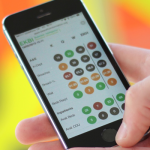 Making better use of healthcare data has been one of those issues that has been pressing for decades now without progress ever seeming to be made.
Making better use of healthcare data has been one of those issues that has been pressing for decades now without progress ever seeming to be made.
I wrote recently about the potential for blockchain to play a part in any next generation health information system, and there are clearly a number of technological advances that demand a more unified approach, whether that be the rise in wearable data or the increasingly cost effective means of mapping ones own personal genome.
Visualizing data
Of course, having these vast amounts of data is no use if people can’t make sense of it. One of the ways we can do this is to use artificial intelligence to make sense and extrapolate trends from the data. Another possibility is to use data visualization to aid our understanding.
It’s into this field that Beautiful Information has entered. The company, which was selected as one of Nesta’s ‘New Radicals’ for 2016, has developed an Operational Control Centre app that aims to present data in a more accessible way.
The app aims to transform previously unmanageable data into usable information by displaying it in a visual and real-time way to both managers and clinicians. The app comes with a customizable dashboard so teams and organizations can gain access to the exact data they desire, whether that’s patient waiting time or the throughput of a particular department.
Staff can also establish alerts so that they are notified whenever certain targets are reached. For instance, if there are delays in preparing patients to go home, managers can be alerted.
The hope is that this kind of rapid and accessible information system will better enable medical staff to make smarter decisions in real-time rather than having to wait long periods for reports to be generated.
“It means that senior management and the executive team can be up to speed with what is happening and understand how each site is coping. It also helps us pick up wider trends which improves our discussions with commissioners about the wider system,” as one hospital manager put it.
The system has already been put to use in a number of hospitals in the UK, and it will be fascinating to track its progress.